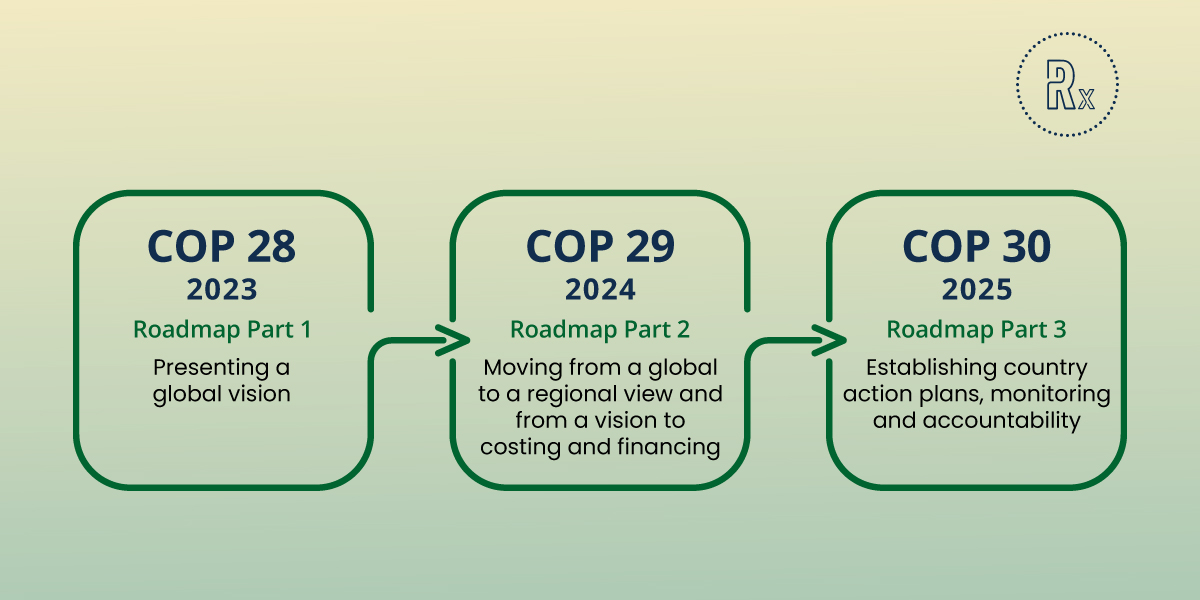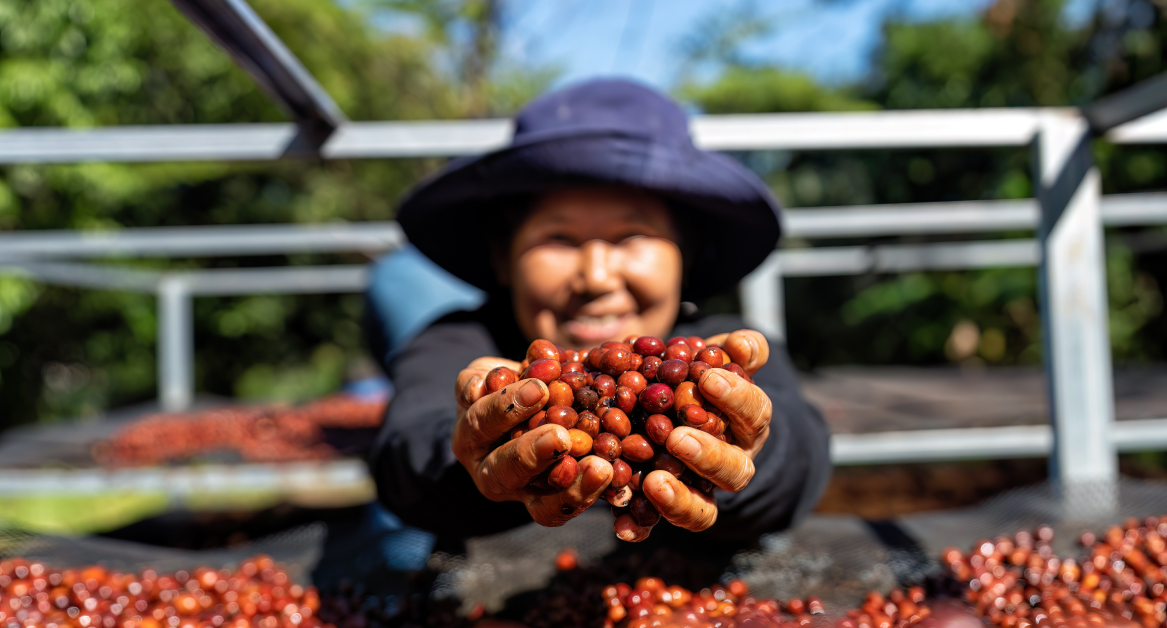COP, or the Conference of the Parties, refers to the annual meeting of the countries that are part of the United Nations Framework Convention on Climate Change (UNFCCC).
COP’s most recent launch COP28 (from November 30 to December 12, 2023) aimed at transforming global agrifood systems from net emitters of greenhouse gases to carbon sinks by 2050 is more than a policy shift; it’s a clarion call for immediate, actionable change.
This initiative, nestled under the overarching goals of the Paris Agreement, is not just about reducing emissions; it’s a comprehensive approach to achieving global food security, enhancing resilient food systems, and meeting climate goals.
1. Launch of the UN’s Net-Zero Food Plan
In an era where climate change poses an existential threat to our global agrifood systems, the United Nations Food and Agriculture Organization (FAO) has stepped forward with an ambitious and revolutionary initiative.
Launched at COP28, the UN’s Net-Zero Food Plan is a strategic blueprint designed to transform the world’s agrifood systems. This transformation aims to convert these systems from significant net emitters of greenhouse gases into carbon sinks by the year 2050.
The FAO’s initiative identifies ten priority areas, each playing a pivotal role in this transformative journey. These areas include:
- Livestock: Reimagining livestock management to reduce methane emissions, a potent greenhouse gas, and improving grazing practices.
- Soil and water: Enhancing soil health with regenerative agriculture and water use efficiency to increase carbon sequestration and reduce water wastage.
- Crops: Focusing on sustainable crop production techniques that minimize environmental footprints while maximizing yields.
- Diets: Promoting dietary shifts towards more sustainable and nutritionally rich food choices.
- Fisheries: Implementing sustainable fishing practices to preserve marine biodiversity and ecosystem health.
By targeting these areas, the FAO aims to initiate a comprehensive plan of how food should be produced, transported, and consumed.
2. Roadmap for sustainable agrifood systems
Guiding policymakers and the private sector
The FAO’s roadmap, launched at COP28, serves as a strategic guide for policymakers and the private sector. It outlines a detailed action plan for transforming agrifood systems to align with climate goals and sustainable practices.

This roadmap is a comprehensive tool that assists in decision-making processes, ensuring that food systems evolve in a way that is both environmentally sustainable and economically viable.
Promoting sustainable and profitable investments
A key focus of the roadmap is to encourage sustainable, yet profitable investments in agrifood systems. It presents a range of strategies that include:
- Boosting crop and livestock yields: Implementing agricultural practices that enhance the productivity of crops and livestock in a sustainable manner.
- Reducing food loss and waste: Addressing inefficiencies in the food supply chain to minimize the loss and waste of food from farm to consumer.
- Shifting diets towards sustainability: Encouraging dietary changes that favor consumption of more sustainable and environmentally friendly food options.
Immediate action and cross-sector collaboration
The roadmap also emphasizes the need for immediate action and advocates for collaboration across various sectors. It calls for an integrated approach where governments, the private sector, and civil society work together to implement the roadmap’s objectives. This collaborative effort is crucial for achieving a holistic transformation of agrifood systems, ensuring food security, and meeting climate goals.
3. Focus on food security and nutrition
The FAO’s roadmap, as discussed at COP28, sets a clear objective: ensuring food security and nutrition for all. This ambitious goal is rooted in the need to transform agrifood systems, making them more sustainable and resilient to climate change, thereby addressing the dual challenges of food security and environmental sustainability.
Currently, the investments in climate initiatives within the agrifood sector are markedly low, comprising only a small percentage of global climate finance. The FAO’s roadmap highlights the necessity of increasing these investments. Boosting funding in this sector is crucial for implementing sustainable practices that can address food security and climate challenges in tandem.
A critical aspect of the roadmap is its focus on the staggering number of people facing chronic malnourishment globally, which stands at around 738 million. This figure underscores the urgency of transforming agrifood systems not just for environmental reasons, but as a vital step towards eradicating hunger and achieving global nutritional goals.
4. Implementation of the Emirates Declaration
Overview of the Emirates Declaration
Launched at COP28 by the United Arab Emirates presidency, the Emirates Declaration on Sustainable Agriculture, Resilient Food Systems, and Climate Action has been endorsed by over 150 countries and is supported by the FAO.
This non-binding declaration underlines the transformative potential of agriculture in responding to climate change and ensuring global food security. It commits signatories to integrate agriculture and food systems into their climate action plans, adopt inclusive policies, secure financing, promote innovations, and strengthen international trade.
Global political will for agricultural and food system transitions
The Emirates Declaration represents a significant global political commitment to transforming agriculture and food systems. It is a clear demonstration of the international community’s willingness to take concerted action towards sustainable agriculture and resilient food systems.
The declaration is also closely aligned with the 2030 Agenda for Sustainable Development and the Paris Agreement. It supports the overarching goals of these global frameworks, particularly in terms of sustainable development, climate action, and food security. The declaration’s emphasis on sustainable agriculture and resilient food systems is key to achieving the Sustainable Development Goals (SDGs), especially those related to ending hunger, promoting sustainable agriculture, and combating climate change.
5. Seaweed as a sustainable solution
An innovative solution for climate mitigation and biodiversity restoration
Seaweed, including kelp, represents a largely untapped resource in the fight against climate change. These underwater forests, which are among the planet’s largest coastal vegetated habitats, have significant potential for mitigating climate change. Recent studies have highlighted their capacity to absorb substantial amounts of carbon dioxide, comparable to the carbon-capturing ability of billions of trees.
Seaweed’s carbon absorption potential
The protection, restoration, and improved management of kelp and seaweed forests could mitigate climate change by removing tens of millions of tons of CO2 per year globally. This is particularly notable in regions like fjords, canyons, oceanic islands, or deep-sea areas, where kelp and seaweed forests show higher carbon sequestration potential. Such efforts in polar and temperate regions can significantly contribute to blue carbon solutions, a concept referring to the carbon captured by the world’s oceans and coastal ecosystems.
Substituting plastics and other applications
While the research specifically highlights carbon sequestration, seaweed also has potential as a sustainable substitute for plastics. Its versatility and the range of applications, from food to biodegradable materials, position seaweed as a multifaceted solution addressing various environmental and social issues.
Addressing the Seaweed Revolution
The increasing recognition of seaweed’s role in climate mitigation has led to what some experts call the “seaweed revolution.” So investing in the seaweed revolution can offset your business’s GHG emissions through carbon sequestration, sustainable product alternatives, and enhancing biodiversity.
Read more: Inset vs Offset: Understanding the Differences in Carbon Strategies
However, seaweed forests are currently facing threats from nutrient pollution, marine heat waves, and ocean warming, which underscores the urgency of conservation and sustainable management practices.
Seizing opportunities for a sustainable agrifood future
As we reflect on the insights from COP28, the imperative for immediate and coordinated action in transforming our agrifood systems becomes clear. The UN’s Net-Zero Food Plan, underpinned by the ambitious Emirates Declaration and innovative solutions like seaweed, presents a roadmap for a sustainable future. These initiatives, emphasizing food security, nutrition, and climate mitigation, align closely with the objectives of the Paris Agreement and the 2030 Agenda for Sustainable Development.
For RegenX, our role in providing eco-agriculture financing and supporting farmers in adopting regenerative practices is more crucial than ever. By aligning with these global efforts, RegenX contributes significantly to the transition towards sustainable, resilient agrifood systems. Learn more here.



